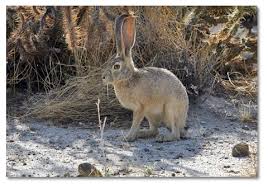O. cuniculus population. Over time the rabbits developed resistance to the disease, and currently RHD is used to control the pest rabbit population in Australia and New Zealand (Fenner and Fantini, 1999). RHD was first identified in the U.S. in 2000. RHD has the potential to affect both the commercial and pet rabbit populations in the U.S.
The Old World rabbit is native to Western Europe and Northwest Africa. The Old World rabbit was spread to new areas by human exploration and exists today on every continent except Antarctica. A rabbit's fur makes them well suited for cold climates and they can manage in warm regions as well. Where rabbits have no natural predators they are considered pests, since they eat agricultural crops and compete with native species for forage. Rabbits were introduced to New Zealand and Australia, where the lack of natural predators allowed their population to grow unchecked. 
Rabbit domestication began when the Phoenicians reached Spain around 1000 BC. Breeding was conducted either in hutches or in walled warrens and eventually rabbit rearing became popular in cities. Rabbit meat production became relatively standardized in the late nineteenth century, and improvements continued in the twentieth century. Early advances in rabbit production flowed from the U.S. to Europe. After 1950 European production improvements advanced more quickly as demand for rabbit in the U.S. was replaced by increasing beef demand. Today, Italy and France maintain a comparatively high demand for rabbit meat, and are leaders in rabbit production.
Rabbits are susceptible to a number of diseases, including myxamatosis, tularemia, pasteurellosis, coccidiosis, enterotoxemia, encehpalitozoonosis and RHD. Tularemia is a zoonoses that is often contracted when wild rabbits are hunted for game. Myxamatosis was once used by Australia to control their wild
Oryctolagus cuniculus. O. cuniculus was introduced to North America by early settlers who used the rabbits as a source of food and furs. Rabbits, hares and pikas are members of the Leporidae family, commonly known as lagomorphs. Native North American lagomorphs include the cottontail (Sylvilagus audubonii) and jack rabbits (Lepus). Jackrabbits are actually hares and give birth to fully furred kits with open eyes that can hop shortly after birth. Rabbits give birth to furless, deaf and blind kits that rely on their mothers milk at birth. Wild rabbits are herbivorous and re-ingest waste, cecals, to retain as much nutrient value as possible from their diet. Wild rabbits do not have very long lives (less than two years) and they reproduce quickly with litters of five to six kits.
Tidak ada komentar:
Posting Komentar